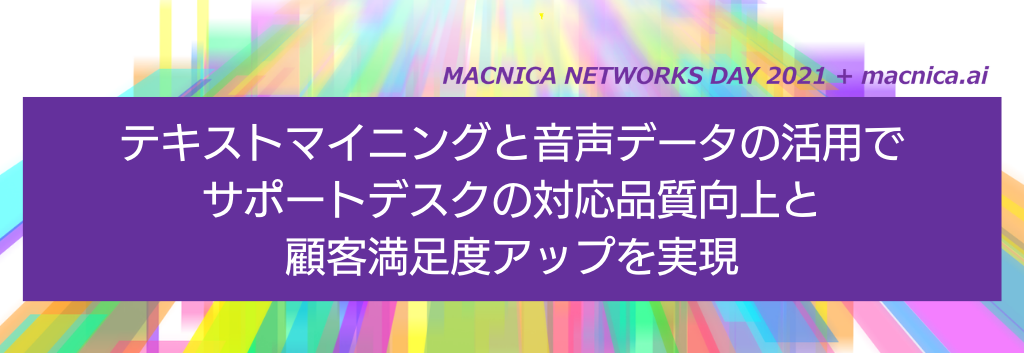
Since the "quality of response to inquiries" at contact centers and support desks has a significant impact on customer satisfaction, improving response quality can be said to be a company's top priority. What is useful here is efficiency improvement by "text mining", elimination of personal correspondence, and utilization of "voice data". In this article, we will explain the methods and tips for using text mining to improve the quality of support response and voice DX in the new normal era.
Support quality is the key to improving customer satisfaction
One of the big changes happening now is the shift to services and subscriptions. It is a change from so-called "selling things to selling things". There is also an increasing risk that users will leave the contract due to shortened contract periods and price increases without prior notice. The question is how to improve the customer experience and get them to continue using it, in other words, how to increase user engagement and make them "fans".
How to improve the quality of after-sales support, which is the main point of contact with customers, will lead to solving current business issues. In conversations with customers, the bottleneck they all mention is "knowledge management."
Knowledge management is a business management method that improves overall productivity by sharing intellectual assets such as knowledge and know-how and linking them to innovation. There are two main reasons why knowledge management does not work well.
The first is that tacit knowledge occurs. There is a tendency to rely on empirical rules for sorting out inquiries and responding to them, so there is a large discrepancy in quality between young employees and experts. The second is the quality of knowledge management. The huge number of patterns has not been neatly organized as FAQs, and it takes time to extract the past response history from the system, and the wrong answers are given.
Specific Problems of Knowledge Management and Solutions by "Text Mining"
When tacit knowledge intervenes, it becomes dependent on the individual, causing variations in quality and affecting performance. It is important how quickly and accurately we can find and use knowledge and past cases.
Even at a general technical support desk, there are many operations that tend to depend on individual skills. One is the response when the operator understands the meaning of the inquiry. Customers don't always organize their inquiries, so it takes a lot of experience to be able to make sense of obscure information. The second is operator guessing. The ability to understand the background and expectations of an inquiry, and to guess the best way to sort it out, depends on the operator's empirical rules and tacit knowledge. The third point is the operation of the search system. The accuracy of matching search words to elicit appropriate answers depends on the operator's rule of thumb.
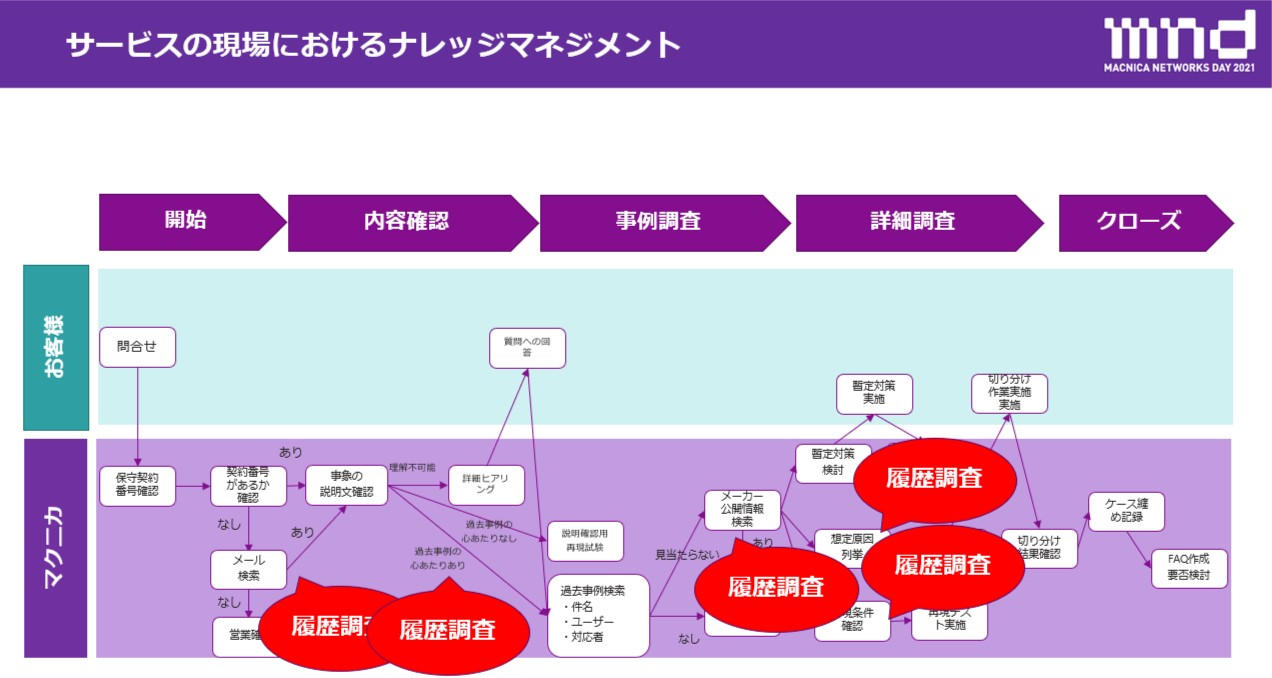
An operation flow created using a typical technical support desk as an example
So, is it not possible to eliminate this individual-mediated process itself?
If you can search for similar past cases using the text of the inquiry itself as a search word, you can greatly reduce the number of steps that require human intervention and eliminate the need for individual inquiries. To achieve this, it is necessary to use a system to replace the text comprehension that humans do, and this can be achieved using the method of ``text mining.''
As a solution to the individual issues mentioned above, Macnica offers a "fuzzy search system" that uses an engine called LUMINOSO that understands natural language.
Features of the "Fuzzy Search System"
By using this system, when an operator receives an inquiry, it is possible to eliminate the heuristics and variations in search methods used by people, from checking the content to finding appropriate past cases.
Specifically, you can access past knowledge in a few seconds by simply copying and pasting the text of your inquiry into the search screen.
In addition, compared to open source development, this system utilizes LUMINOSO's natural language processing and text mining, so initial model creation and tuning can be done in a few minutes, significantly reducing system construction time. enables reduction of
By using Macnica 's fuzzy search system, you can start up your business in a short time. On the other hand, although developing it in-house takes time initially, it allows data scientists to accumulate knowledge, and it can be said to be a flexible method. Both have their advantages and disadvantages, so please choose according to your company's policy.
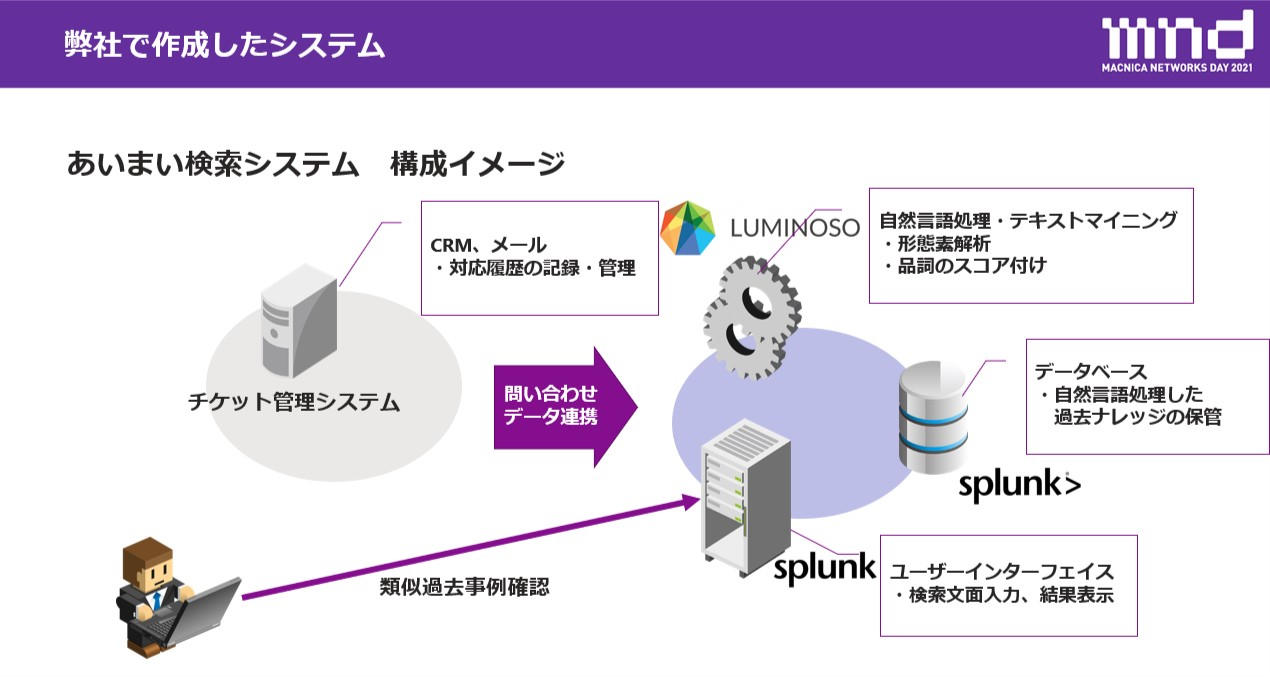
Configuration image of fuzzy search system
Analyze and utilize voice data, which is the “voice of the customer” itself
In order to improve the quality of support, I would like to pay attention to the use of "voice".
Voice is a “treasure trove” and the “voice of the customer” itself. It includes information that cannot be picked up from text data, such as the true intentions of the speaker, characteristics of the speaker, emotions, and speaking style, which cannot be picked up by questionnaires.
Voice is becoming more and more popular in business. It is used to streamline the creation of daily business reports and meeting minutes, to provide mental care through emotional analysis, to analyze complaints at call centers, and to improve the skills of operators.
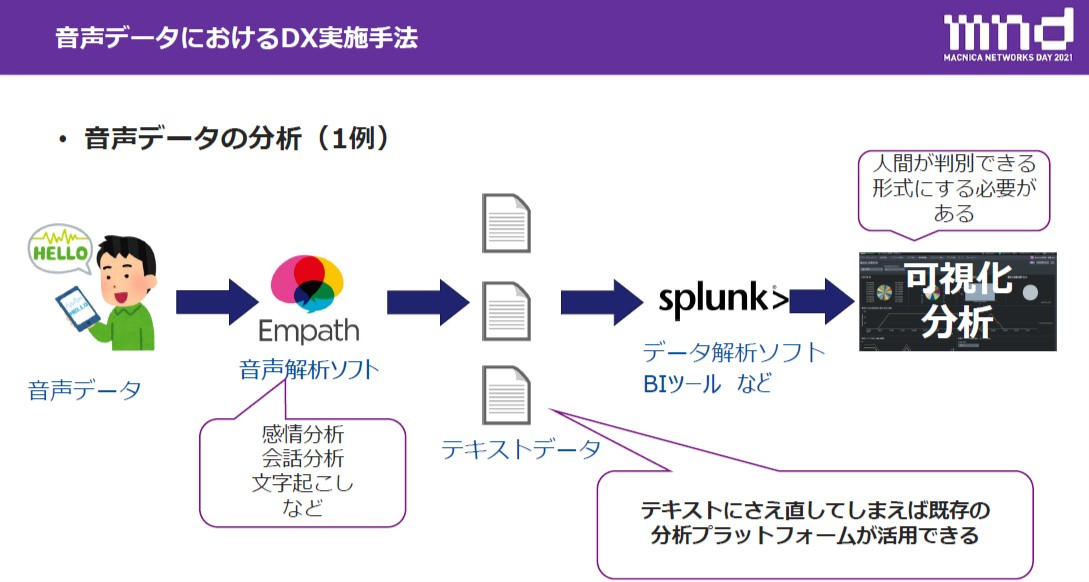
Image of a method for analyzing and visualizing speech data
In addition, it is possible to create higher value by combining and analyzing text data and customer information held by existing platforms such as call center CRM. Among them, there are cases where voice is used for the purpose of improving the quality of call centers, and improvements are being made to customer service based on the data obtained by visualizing and analyzing the emotions of the speaker.
Analyzing the voice of 1on1 meetings and visualizing the mental state of employees
Macnica also analyzes audio from 1on1 meetings internally. The purpose of this meeting is for managers to check on the work status of each person in charge and take care of them.
With remote work these days, it has become difficult to visually check on employees' status and chat with them. By analyzing voice, it is possible to quantitatively understand the mental state of employees.
Here you can compare emotions with the previous meeting and see trends over time. The parameters output by Beluga Box are displayed as "energy level" and compared with those from past meetings to check whether there is a mental decline.
By adding information such as overtime hours and surveys to the dashboard, you can check along with changes in energy level, making it possible to follow up early.
The number of situations in which voice is used is expected to increase in the future, and it will become an inseparable part of our lives. If you have any ideas that you would like to use in your business, please feel free to contact us.
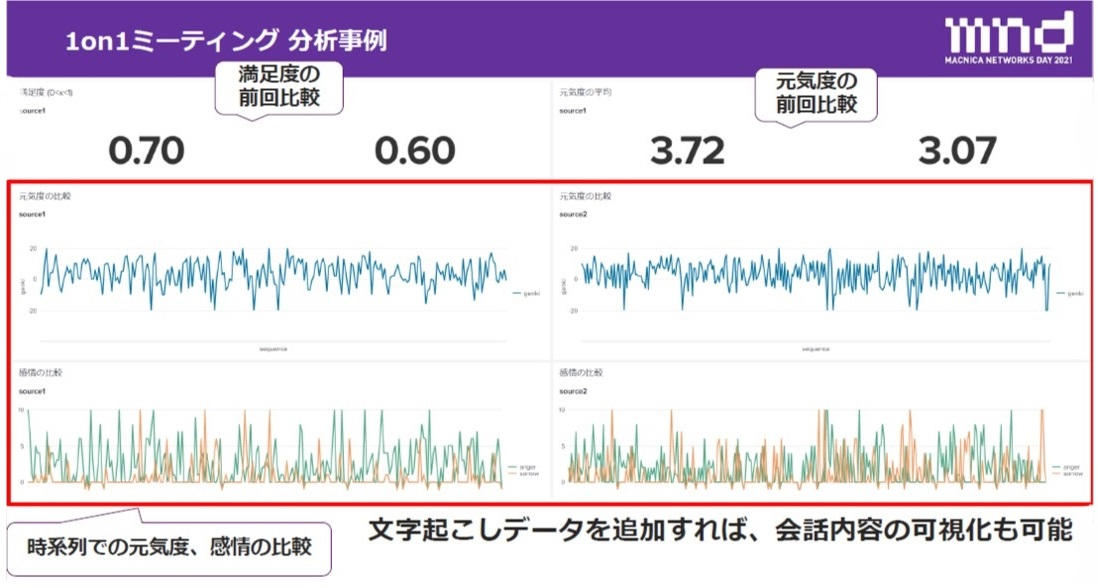
Visualize the mental state of employees by using "energy", which quantifies positive emotions
▼DX (Digital Transformation)
▼E-mail magazine registration
